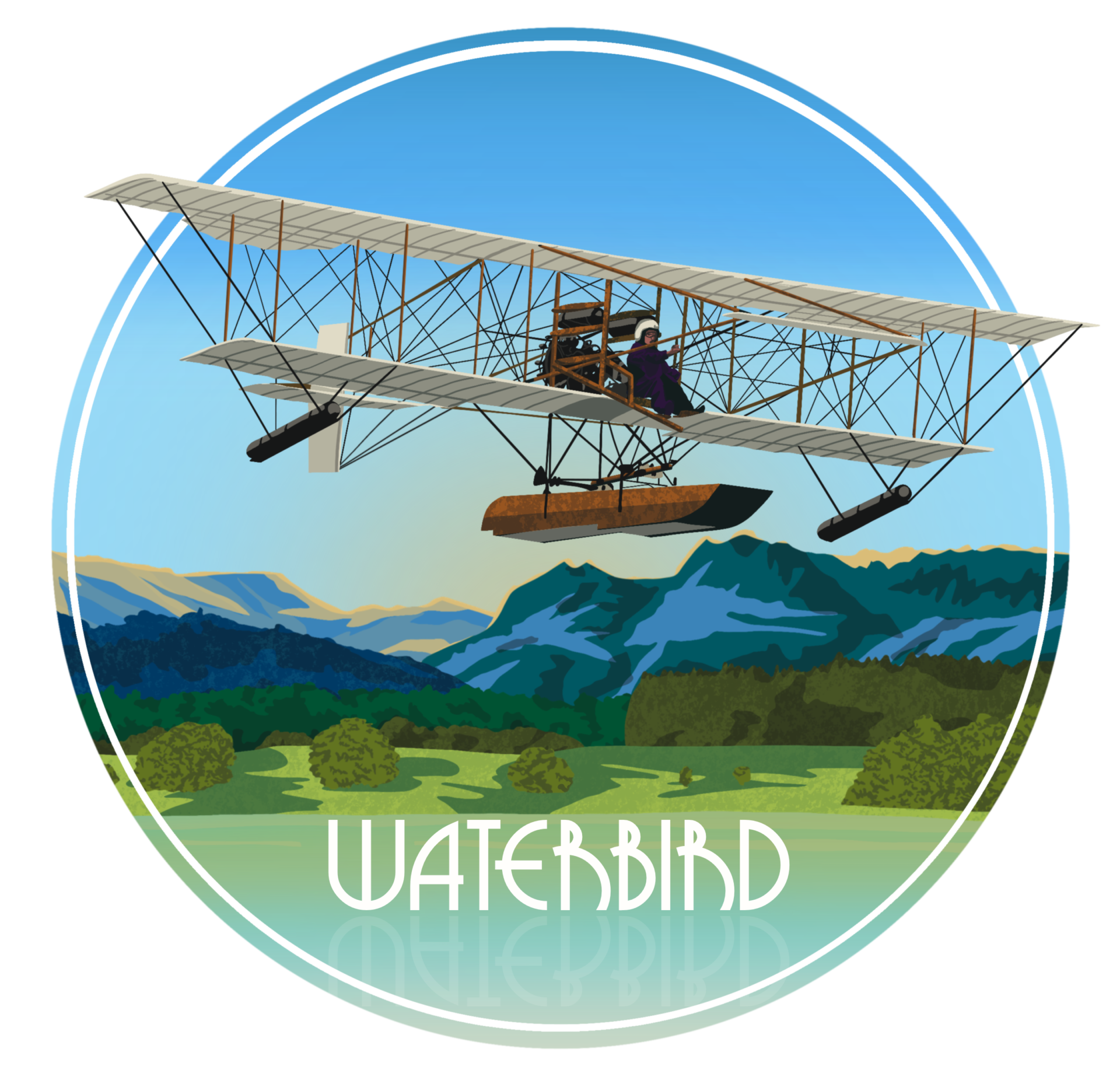A modified Slingsby Falcon 1 glider was flown from Windermere on 3 February 1943 by Flight Lieutenant Cooper Pattinson DFC and on 7 February by Flight Lieutenant Wavell Wakefield.
This photo shows Wakefield in the cockpit, with Pattinson to the left. It was taken on the slipway of the Short Sunderland flying boat factory at White Cross Bay, Windermere, from which launching took place having fitted a bogey.
The glider was towed by Chris-Craft Moana, driven by Lady Craven.
Adaption was undertaken by G. H. Pattinson Ltd at their workshops in Beresford Road, Windermere. The work was carried out by joiner George Gibson, under the direction of Pattinson. The new hull was constructed using obeche wood with a marine ply covering sourced from the flying boat factory.
In 1973, first day covers were issued to commemorate the achievement.
Below is an extract from Wakefield’s article in the Air Training Corps (‘ATC’) Gazette of April 1943, when he was Director of the ATC
‘Last year, in face of many difficulties, gliding was started in the ATC. Thanks to the keenness shown by officers, instructors and cadets, good progress was made, but if gliding is to play a major part in the activity of the Corps opportunity must be taken to use every facility that exists.
‘Last autumn, I considered that there was a gap which needed filling. There were speedboats available, and good stretches of water surrounded by hills which ought to provide good soaring conditions. Here then, was a field for exploring. Accordingly, I arranged for a Falcon 1 single-seater glider to be sent to Windermere for modification by Captain Cooper Pattinson, DFC, an old flying boat pilot. He added two wingtip floats, cut off the skid, put a ply hull with two steps on to the fuselage and made the fuselage watertight. The quick-release attachment was altered so that the pull came in the correct position for towing off water, and the airspeed indicator was placed into a position on the wing where the water would not splash into it.
‘On my first flight there was a steady northerly wind of 12 to 15 miles an hour blowing down the lake. About 300ft of cable was let out from the speedboat. Signalling was done by the hand. Wireless or some form of loudspeaker between glider and speedboat is advisable. It is better that oral rather than visual means of inter-communication should be used. Voice transmitted by loudspeaker and compressed air booster might be a suitable method.
‘On the first take-off I tried to pull the glider off the water too quickly, and instead of getting it up on to the step I got it right off the water, and as a result porpoised a bit. After taking the air, however, I quickly gained height, quick-released and made a satisfactory landing.
‘On the second take-off I got the glider up on to the step and it took off beautifully. Here again I only went up to about 200 or 300ft, and then quick-released and landed in the roughest water I could find in the wash of the speedboat. The glider behaved perfectly on alighting.
‘On the next occasion there was very little wind, with the result that the weight of the sagging cable tended to pull the glider underneath the water, and a series of waves came over the cockpit, giving me a good ducking. After a few seconds of this I quick-released before I was able to become airborne or, as seemed possible, being pulled to the bottom of the lake.
‘On the second run the cable was shortened to about 200ft. This time I got off comfortably, and climbed to about 700 or 800ft before quick-releasing over Bowness Bay, where I tried without much success to find an up-current. The glider again landed perfectly.
‘On the third run, again with longer cable, I got another ducking, and had to quick-release again without becoming airborne.
‘For the fourth run the cable was shortened once more and I got comfortably into the air. We ran down the lake, heading into what little wind there was, and the cable was let out to its full extent, so that I was soon flying at 1200ft. I was towed several miles down to the end of the lake at this height, where I quick-released. I made a hill which stuck out into the lake in another endeavour to do some soaring. But the wind was up and down the lake and was too light to provide enough up-current for me to remain long in the air. I was able to make another satisfactory landing.’
– The hull of the Water Glider is now at Windermere Jetty Museum.
